Test Bench: The D2908/716000 TPCD Metamodal 1” Dome Tweeter from Scan-Speak’s Revelator Line

Scan-Speak has been working with Composite Sound to develop a generation of metamodal thin-ply carbon diaphragms (TPCDs), engineered to fully replace the almost impossible-to-source and extremely expensive beryllium domes. The Scan-Speak D2908/716000 1” Revelator TPCD tweeter, which replaced the Revelator D2908/714000, now includes a new 1″ TPCD metamodal diaphragm, combined with the patented Scan-Speak Symmetrical Drive SD-2 neodymium motor structure.
Martin Turesson, head of Composite Sound, originally wrote about the metamodal process as applied to diaphragm technology in the February 2022 issue of Voice Coil magazine, and again last year in an article titled “TPCD Technology in Headphones: Engineering to Control Diaphragm Resonances” published in the January 2024 issue of audioXpress.
As applied to TPCD diaphragms, this means that by judiciously adjusting the location of weight and thickness in the diaphragm, you can control the cone modes and resonances. The benefits of controlling resonant break-up modes are obvious and has been Scan-Speak’s “mantra” for years, leading to the development of the Revelator sliced cone technology and the oval voice coil Ellipticor technology, and now participating in Composite Sound’s metamodal development program leading to the release of the four new tweeters. This month, Scan-Speak sent its new Revelator TPCD tweeter, the D2908/716000 1” wide surround dome tweeter, shown in Photos 1-3.
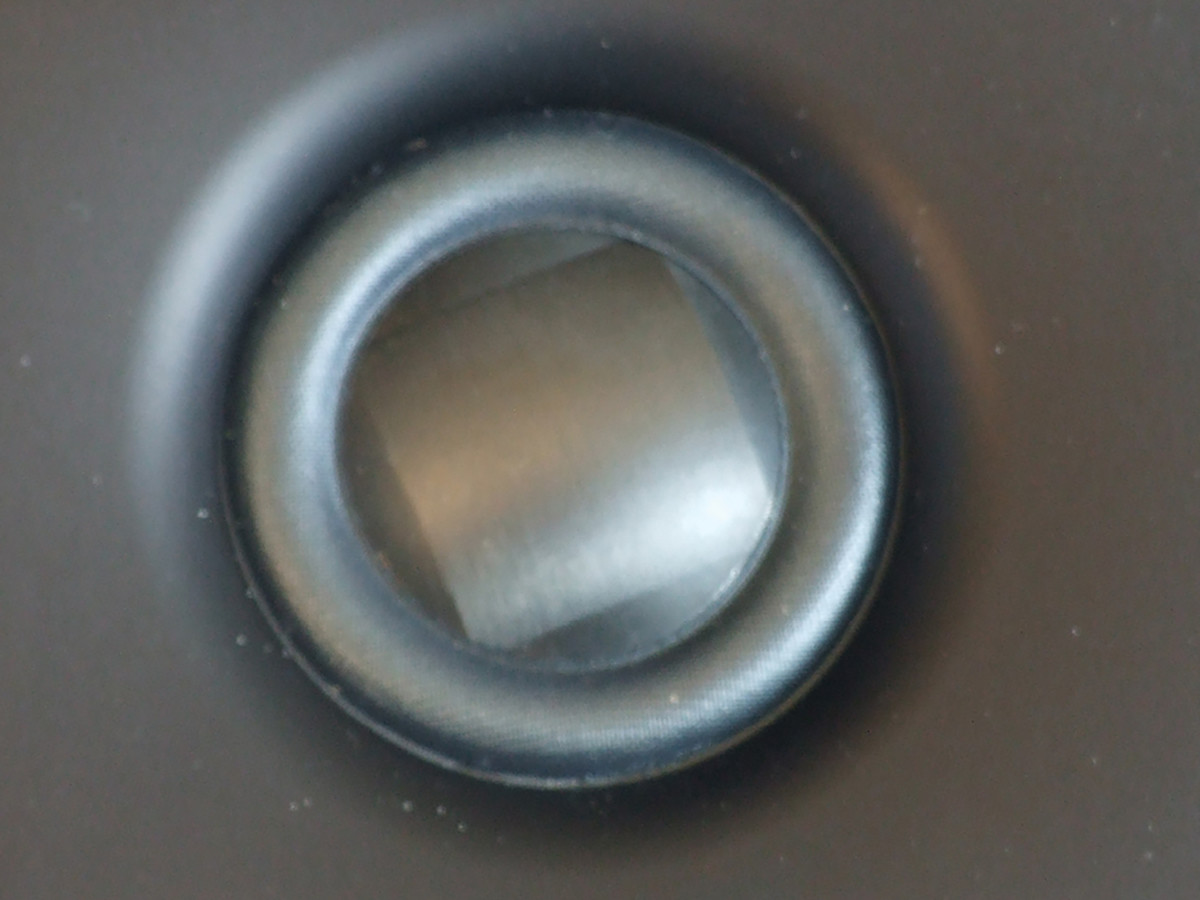
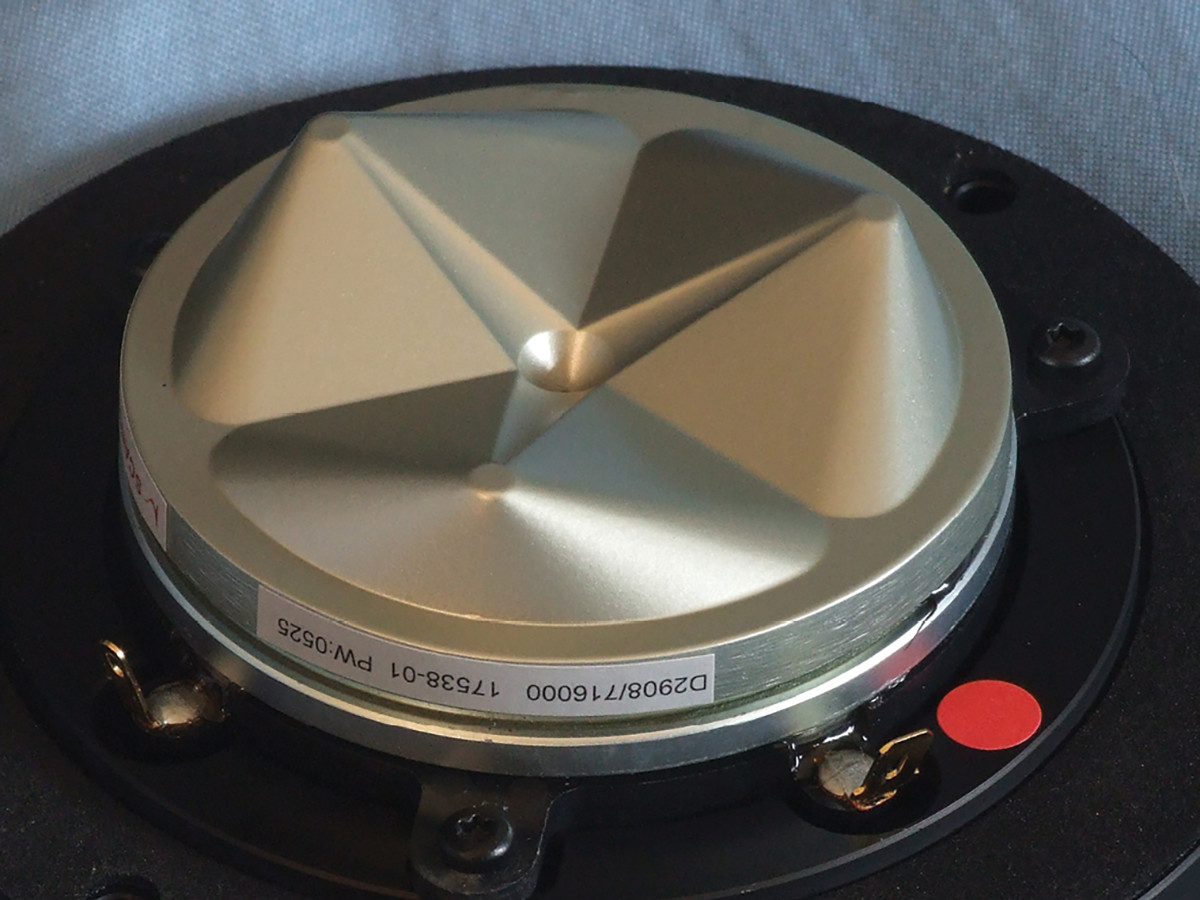
It is important to note that all four new TPCD metamodal Scan-Speak tweeters are replacing five of Scan-Speak’s previous Beryllium tweeters, which included the D3004/604000, the D3004/604005, the D3004/604010, the D3004/664000 Air Circ tweeter, and the D2908/714000. This is of course due to the skyrocketing cost of Beryllium, mostly caused by defense applications of Beryllium taking priority over domestic applications (e.g., loudspeaker diaphragms). For this reason, the US government has been stockpiling Beryllium for defense purposes in the event of a national emergency since 2016. Other than being toxic and carcinogenic, Beryllium still exhibits an outstanding and detailed timbre for tweeter and compression driver diaphragms, so it’s sad to see Berylium diaphragms go by the wayside.
The feature set for the Scan-Speak Revelator series TPCD D2908/716000 tweeter (which replaced the Revelator Beryllium diaphragm D2908/714000) includes a new 26mm (1”) TPCD thin-ply carbon metamodal designed diaphragm, the patented Scan-Speak Symmetrical Drive SD-2 neodymium motor structure, a black anodized 120mm diameter machined aluminum faceplate, large roll coated cloth surround, 160W (IEC 18.4) power handing (with 2.5kHz second-order Butterworth high-pass network), long term 200W (IEC 18.2) power handing, 92.5dB 2.83V/1m sensitivity, shaped nonresonant rear aluminum chamber, plus gold-plated terminals.
I began testing the D2908/716000 tweeter by generating a stepped sine wave impedance plot using the legacy LinearX LMS analyzer. The result of the LMS 300-point impedance sine wave sweep is given in Figure 1. The resonance of the D2908/716000 tweeter is 521Hz (the factory spec is 510Hz with a Qts=0.44). Minimum impedance for the D2908/716000 is 6.06Ω at 4.7kHz, with a 5.58Ω DCR.
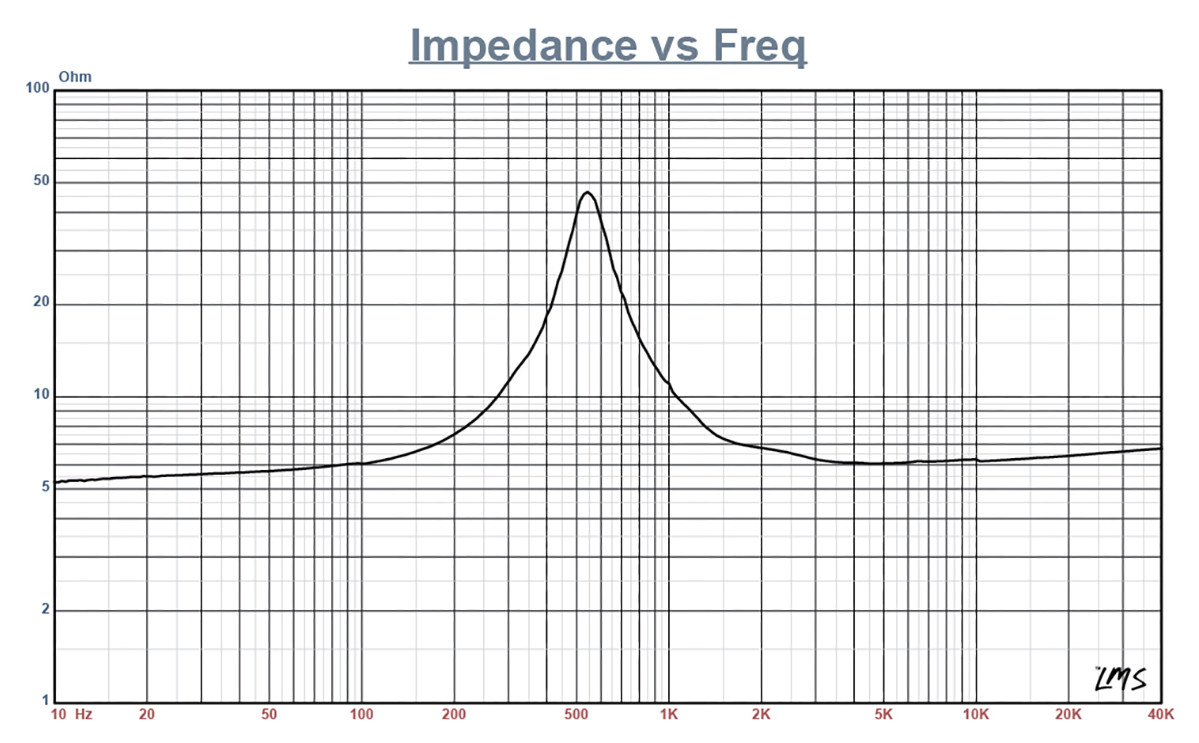
After completing the impedance measurements, I recess mounted the Scan-Speak D2908/716000 TPCD tweeter in a bookshelf-size enclosure that had a baffle area of about 15”×6” and measured the horizontal on- and off-axis at 2.0V/0.5m (normalized to 2.83V/1m) from 0° on-axis to 45° off-axis using the Loudsoft FINE R+D analyzer and the GRAS 46BE microphone (supplied courtesy of Loudsoft and GRAS Sound & Vibration). Figure 2 shows the on-axis response for the D2908/716000, which exhibited a ±2.3dB response from the 2kHz to 20kHz with response out to 40kHz.
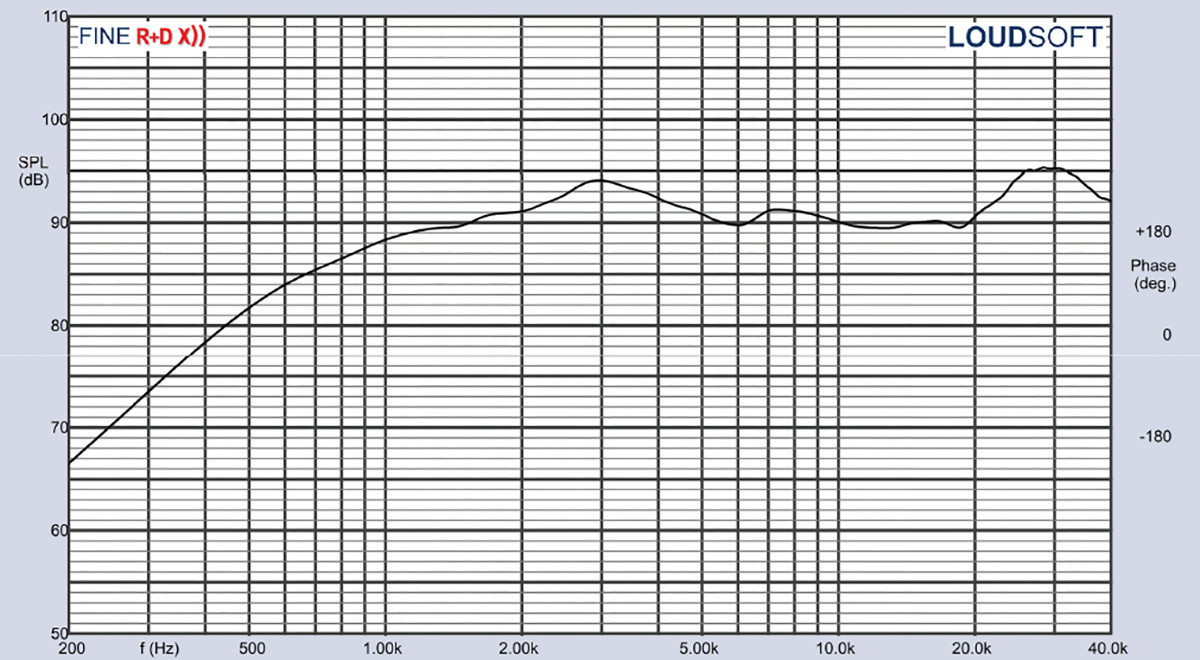
Figure 3 depicts the on- and off-axis (0°-45°) response of Scan-Speak D2908/716000 26mm TPCD metamodal tweeter, with the off-axis curves normalized to the on-axis response shown in Figure 4. Figure 5 shows the 180° horizontal polar plot (in 10° increments with 1/3 octave smoothing applied), generated by the CLIO Pocket analyzer and accompanying microphone (courtesy of Audiomatica SRL). Last, Figure 6 gives the two-sample SPL comparison showing the two Scan-Speak D2908/716000 samples to be closely matched within ≤0.5dB throughout the drivers’ operating range from 2kHz to 20kHz.
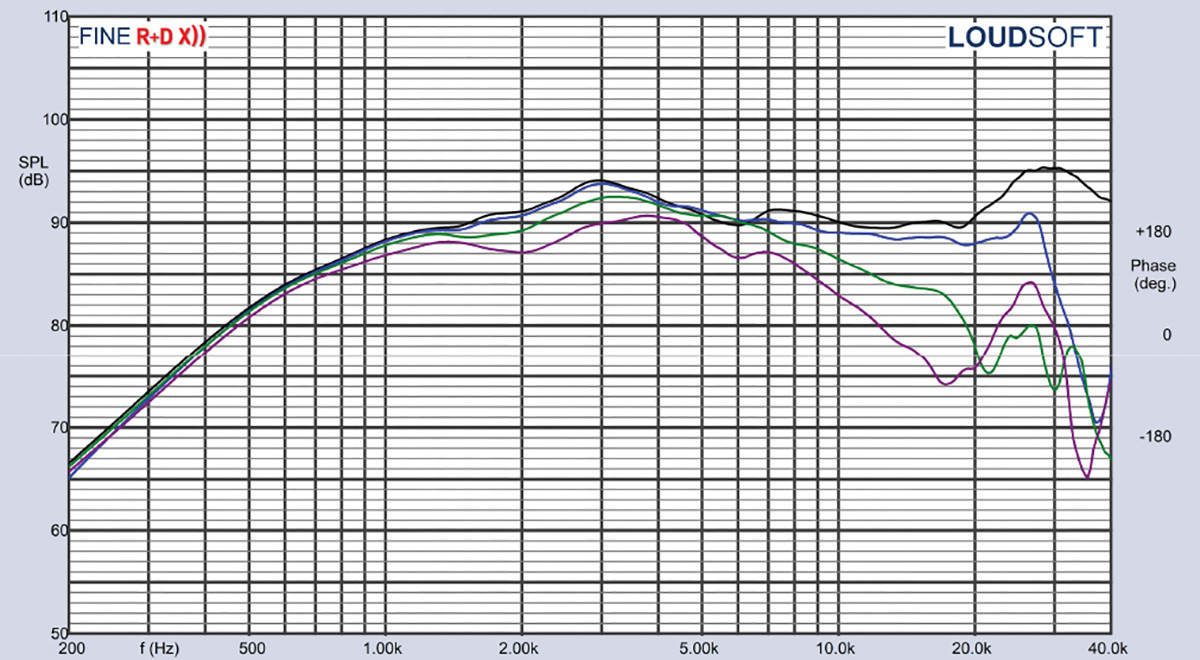
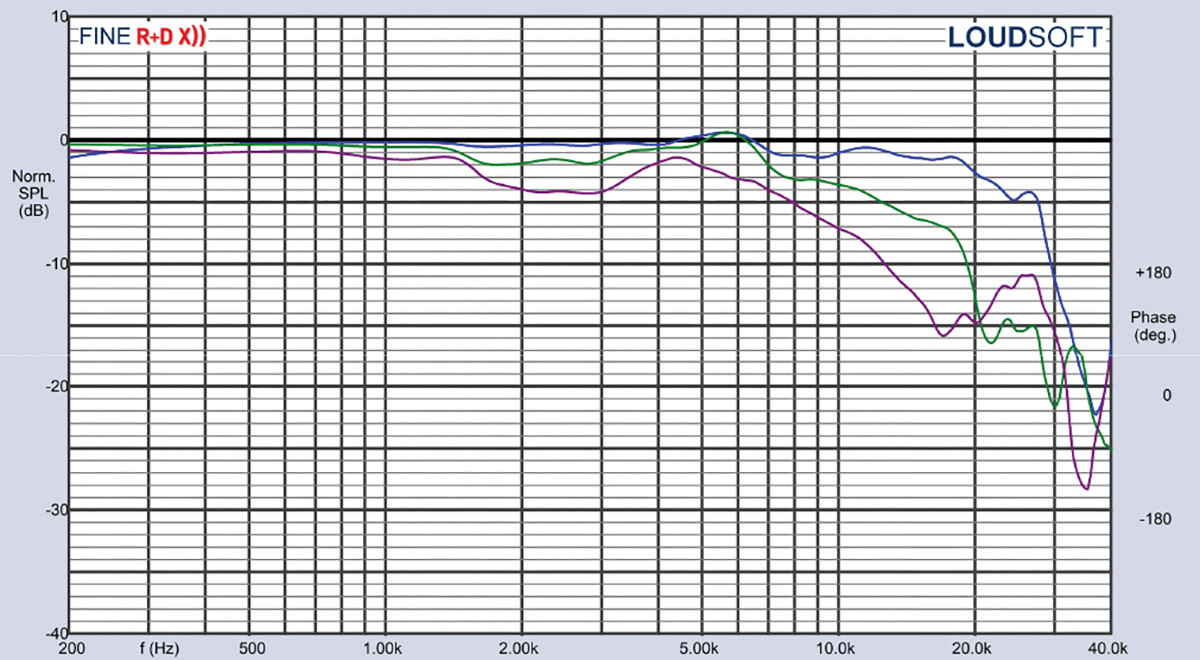
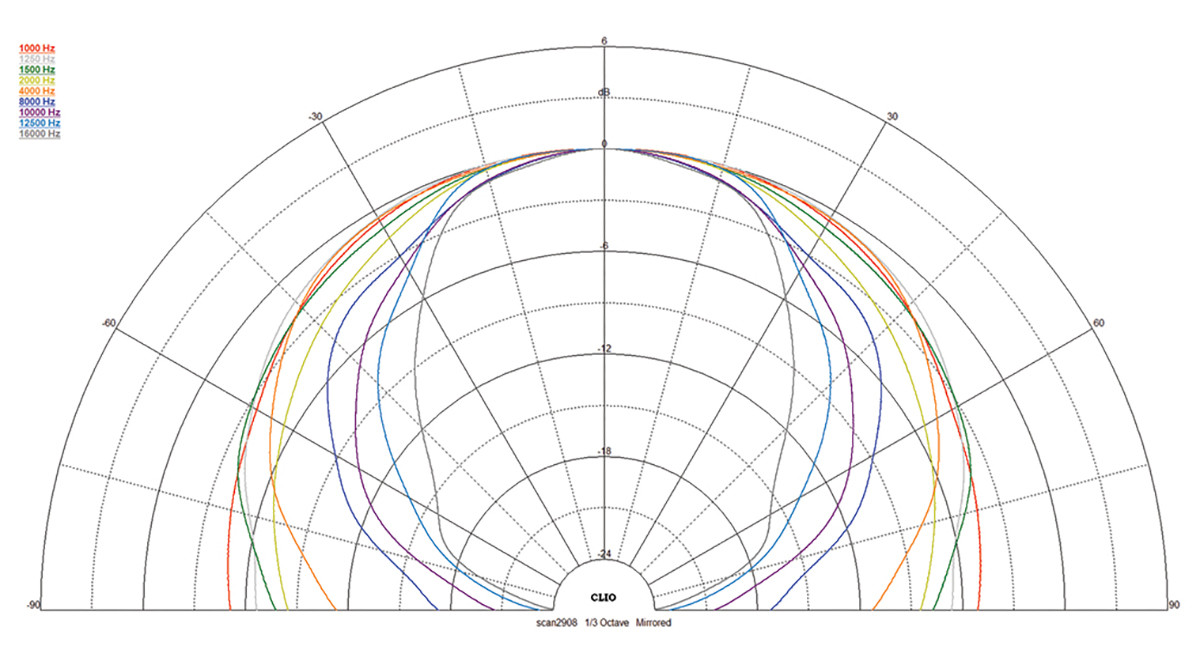
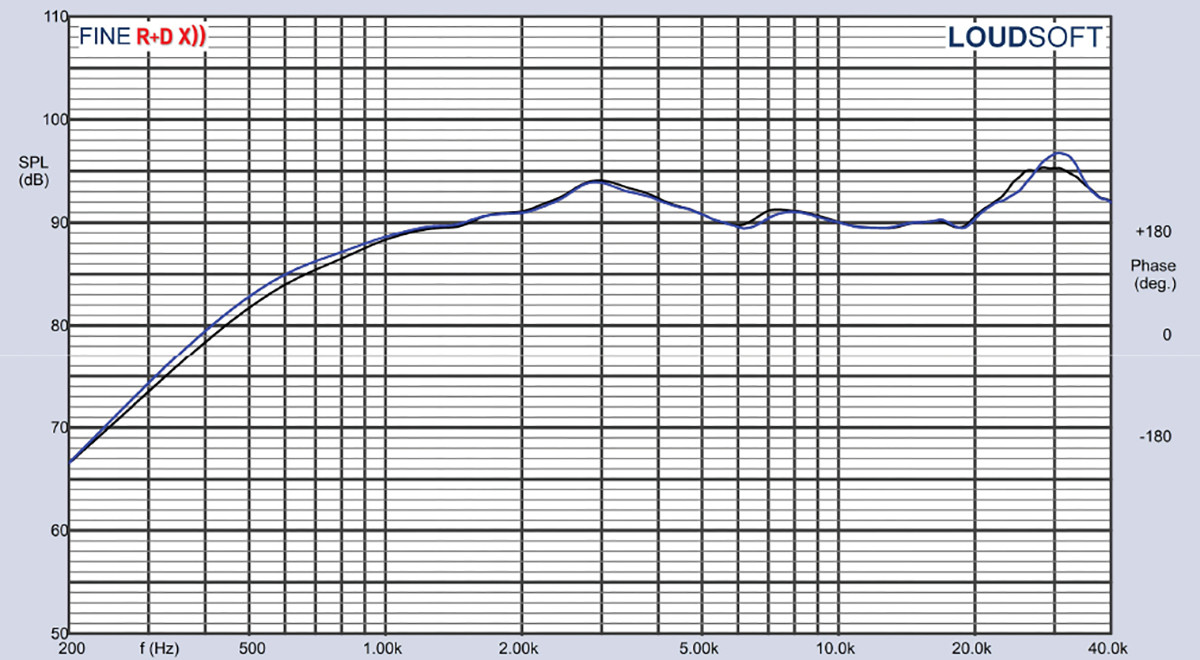
The next test procedure was to again use the Listen SoundCheck V21 software and AudioConnect analyzer and SCM ¼” microphone to measure the impulse response with the tweeter recess mounted on the same test baffle. Importing this data into the Listen SoundMap software produced the cumulative spectral decay (CSD) waterfall plot given in Figure 7. Figure 8 depicts the Short Time Fourier Transform (STFT) displayed as a color-variegated surface plot for the D2908/716000 device.
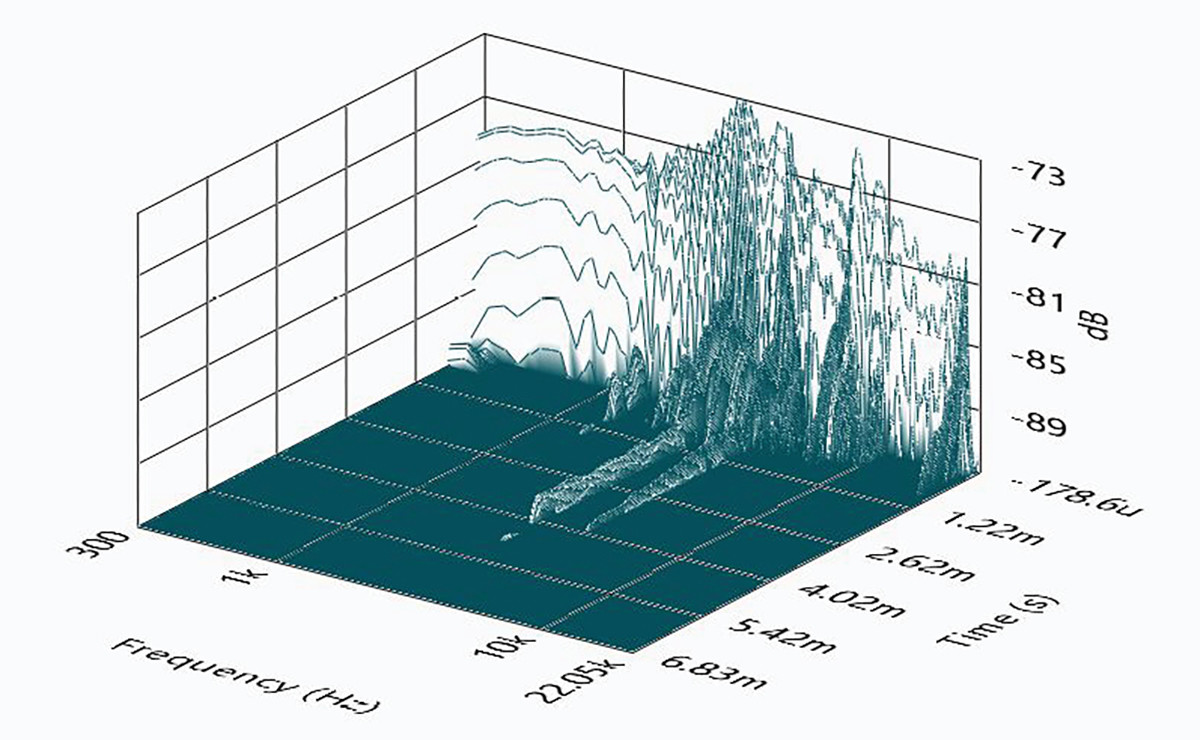
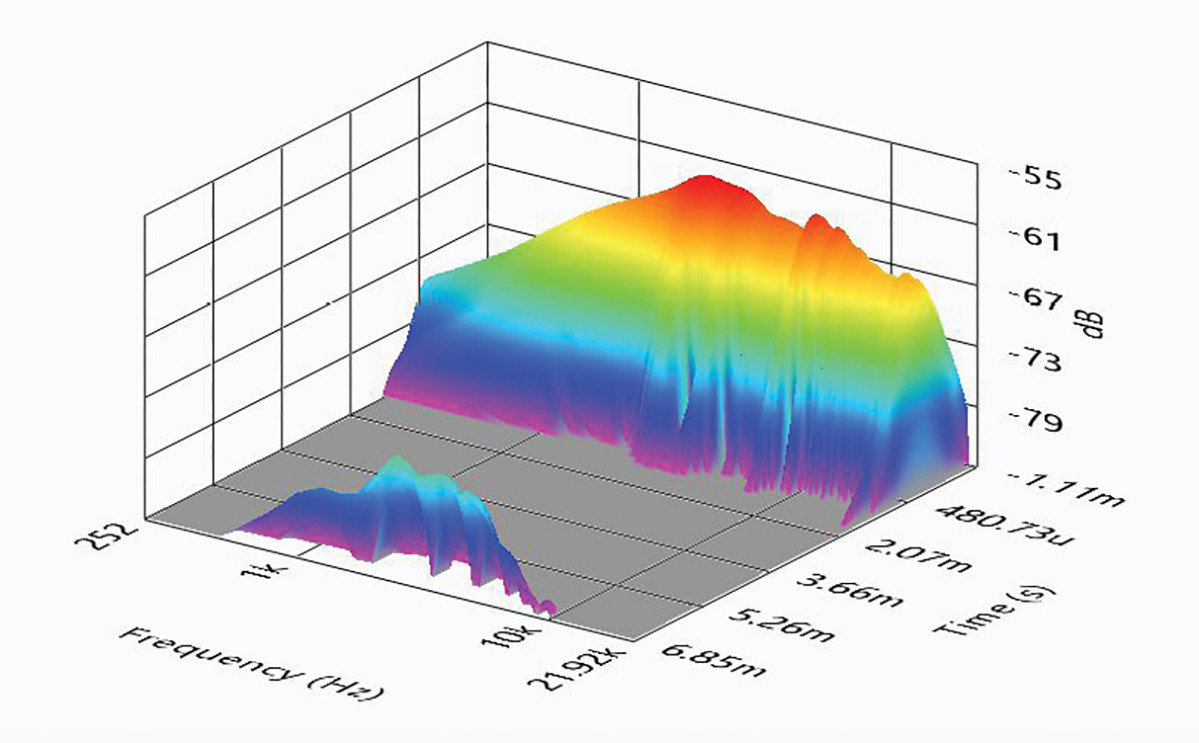
For the final test procedure, I set the 1m SPL to 94dB (3.83V for the D2908/716000) using a pink noise stimulus and measured the second and third harmonic distortion at 10cm. The SoundCheck distortion graph is depicted in Figure 9, demonstrating very low third harmonic content.
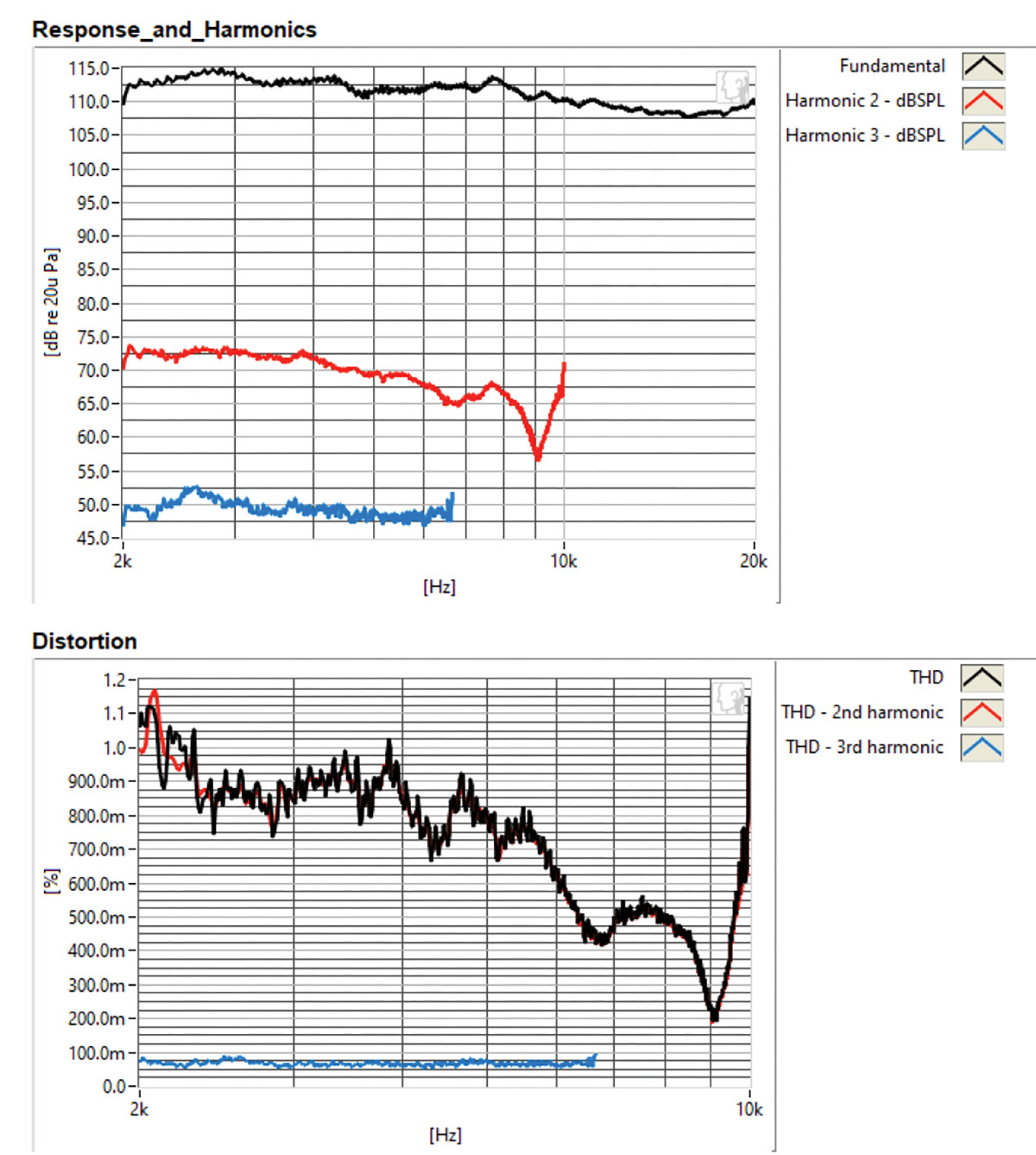
One of the current problems for high-end driver manufacturers is the ridiculously high cost of Beryllium diaphragms. All the OEMs I have talked to recently tell me that they have gone from about $30 for a 1” Beryllium tweeter dome to $160 for the same dome, which in the long run is probably unsustainable. Only one manufacturer, Focal, is actually fabricating its own diaphragms, and since they are processing raw material, they are less dependent on Materion for their costs. While the timbre of TPCD and Beryllium are not identical, the comparison is favorable, so it is no surprise that more and more high-end driver OEMs are releasing new metamodal TPCD transducers.
This new incarnation from Scan-Speak, the D2908/716000, is an excellent example of this new high-resolution diaphragm format and exhibits Scan-Speak’s attention to detail and build quality. For more information about these and other well-crafted high-end transducers from Scan-Speak, visit www.scan-speak.dk. VC
This article was originally published in Voice Coil, April 2025
Source link







